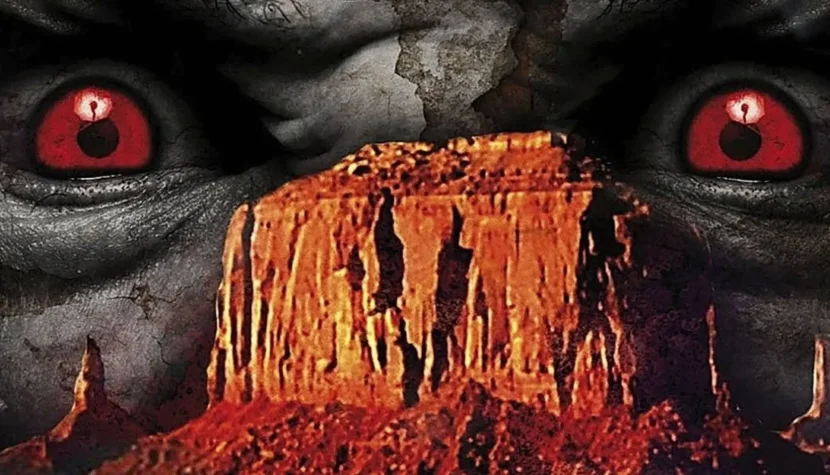MIND RIPPER: Not Even WES CRAVEN Could Save This Sci-Fi

“Mind Ripper” is known to science fiction horror fans under two other titles—”The Hills Have Eyes III” and “The Outpost.” The screenplay was co-written by Jonathan Craven, son of Wes Craven, but this connection did little to translate into the film’s success. Currently available online without much difficulty, Mind Ripper has faded into obscurity within the realms of science fiction and horror, becoming a niche and largely forgotten production. However, it doesn’t deserve such neglect. While it relies on low-budget techniques and familiar tropes, as a whole, it creates a unique atmosphere for a world of fear-tinged fantasy. Its stylistic departure from Wes Craven’s approach should be considered an asset, not a flaw.
So, what went wrong? Likely, the timing. The mid-90s was too early to depict such an ambitious vision of a virus’s effects on the human body and mind, and the competition in the genre was insurmountable.
The filmmakers also lacked a clear idea for building a scientific theory. The virus’s mechanism, how it works, or even how it was created, remains unexplained. What’s clear is that it gives superhuman strength, triggering a kind of rapid mutation in the host’s body. Beyond that, the creators offered no further details, likely not delving deeply into the science. The primary focus was on the theme and the consequences of recklessly conducting human experiments—a theme repeated in science fiction at least a hundred times, usually without much scientific explanation. Hardcore genre fans might argue this contradicts the essence of science fiction, which should develop even fictional scientific theories in detail. Yet, if science fiction had always adhered to such standards, many cult classics in the genre would never have been made. Film, unlike literature, requires a certain level of abstraction to avoid turning the narrative into a tedious rumination on the human condition amid technological advancement. Mind Ripper surprisingly maintains this balance, offering a virus concept and delivering a suffocating, horror-driven narrative reminiscent at times of Ridley Scott’s Alien.

One particular scene echoes Alien directly: a narrow corridor shot from a first-person perspective, with an outstretched hand holding a motion detector. The shot, taken from below, shows a red light and pipes running along a low ceiling. The inspiration from battling the xenomorph on Nostromo is evident.
The plot centers on a small group of unprepared scientists fighting an unknown threat—a human transformed by a mysterious virus. But there’s more. The infected individual gradually morphs into a beast that needs to feed on a substance found in the human brain. Is this another nod to a familiar cinematic trope, this time from zombie films?
This derivativeness is precisely why the film was criticized by those who managed to see it. “Nothing new,” they concluded, coupled with poor technical execution. While that’s true, how many films have borrowed freely from their genre’s history, repurposing its central themes? In the case of Mind Ripper, the primary issues likely stemmed from a limited budget and poor timing.
The year 1995 was a challenging one. Who would notice an obscure Mind Ripper by an unknown director and an equally obscure screenwriter—despite the famous surname—when cinematic giants like Jurassic Park, Forrest Gump, The Crow, Toy Story, Jumanji, and Se7en dominated theaters? There simply wasn’t room for a niche horror-sci-fi hybrid with a largely unknown cast. The most recognizable face for sci-fi fans was Lance Henriksen, but without stronger support, his role was overshadowed—paradoxically, as he played a positive character. Some viewers might also recognize a younger Giovanni Ribisi, who became much more commercially prominent later, but his character remains marginal throughout most of the film and can’t compete with the antagonist, Thor, played by Dan Blom.

Some viewers might also detect another motif, seemingly abstract—Thor is a rather lost monster in human skin. In a way, he’s like a child, but sensitive to beauty, specifically feminine beauty. He kidnaps one of the female characters to… Well, one can only speculate what this Tarzan-like figure intends to do with the virus creator’s daughter. However, the Tarzan motif becomes increasingly apparent as the story nears its conclusion. Thor’s defeat happens almost subtly, as if it turns out he isn’t as dangerous as expected. All it takes is to cut off his tail—an appendage placed erotically in his mouth by the creators—and throw him out of an airplane. Another nod to Alien? Without the plane, it could have been an intelligent use of the oral-rape motif, this time directed at the creature itself.
The issue, however, is that Thor is merely a host for the mysterious entity created by the virus.

